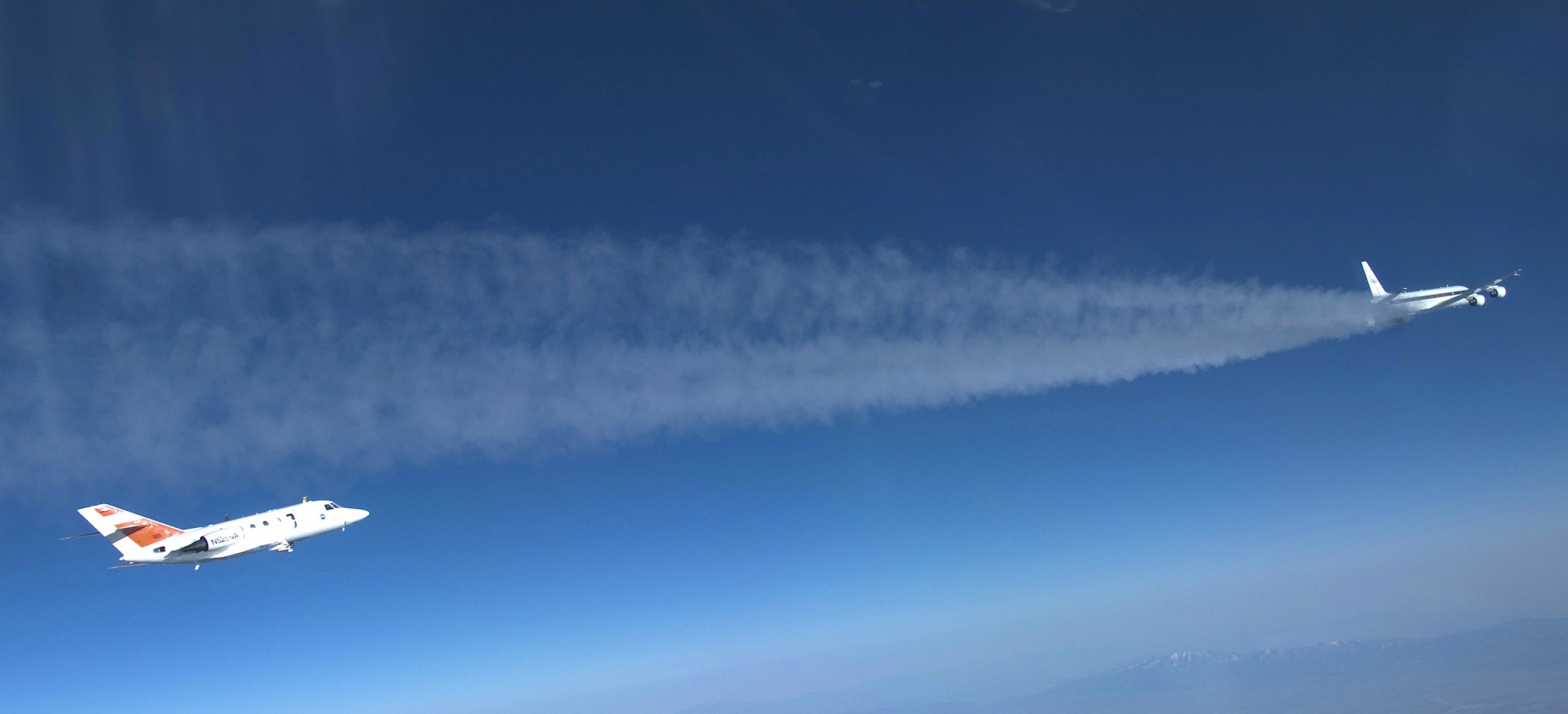NASA has signed separate agreements with the German Aerospace Center (DLR) and the National Research Council of Canada (NRC) to conduct a series of joint flight tests to study the atmospheric effects of emissions from jet engines burning alternative fuels.
The Alternative Fuel Effects on Contrails and Cruise Emissions (ACCESS II) flights are set to begin May 7 and will be flown from NASA’s Armstrong Flight Research Center in Edwards, Calif.
“Partnering with our German and Canadian colleagues allows us to combine our expertise and resources as we work together to solve the challenges common to the global aviation community such as understanding emission characteristics from the use of alternative fuels which presents a great potential for significant reductions in harmful emissions,” said Jaiwon Shin, NASA’s associate administrator for aeronautics research.
NASA’s DC-8 and HU-25C Guardian, DLR’s Falcon 20-E5, and NRC’s CT-133 research aircraft will conduct flight tests in which the DC-8’s engines will burn a mix of different fuel blends, while the Falcon and CT-133 measure emissions and observe contrail formation.
“Cooperation between DLR and NASA is based on a strong mutual appreciation of our research work,” said Rolf Henke, the DLR Executive Board member responsible for aeronautics research. “We are very pleased to be performing joint test flights for the first time, and thus set an example by addressing pressing research questions in global aviation together.”
ACCESS II is the latest in a series of ground and flight tests begun in 2009 to study emissions and contrail formation from new blends of aviation fuels that include biofuel from renewable sources. ACCESS-I testing, conducted in 2013, indicated the biofuel blends tested may substantially reduce emissions of black carbon, sulfates, and organics. ACCESS II will gather additional data, with an emphasis on studying contrail formation.
Understanding the impacts of alternative fuel use in aviation could enable widespread use of one or more substitutes to fossil fuels as these new fuels become more readily available and cost competitive with conventional jet fuels.
Within NASA, ACCESS II is a multi-center project involving researchers at Armstrong, NASA’s Langley Research Center in Hampton, Va., and the agency’s Glenn Research Center in Cleveland. This research supports the strategic vision of NASA’s Aeronautics Research Mission Directorate, part of which is to enable the transition of the aviation industry to alternative fuels and low-carbon propulsion systems.
As part of an international team involved in this research, NASA will share its findings with the 24 member nations that make up the International Forum for Aviation Research (IFAR). DLR and NRC are participating members of IFAR and NASA is the current Chair.
For more information about aeronautics research at NASA, visit:
http://www.aeronautics.nasa.gov
-end-
Karen Northon
Headquarters, Washington
202-358-1540
karen.m.northon@nasa.gov




























